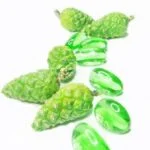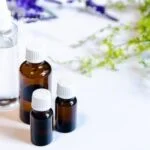Are you curious about how to use aromatherapy oils for massage? Aromatherapy oils offer a wide range of benefits and can significantly enhance the effects of a massage. Choosing the right essential oils is crucial to address different needs, such as relaxation, pain relief, or invigoration. In this article, we will explore the world of aromatherapy oils and provide valuable tips on how to incorporate them into your massage routine for optimal wellness.
Aromatherapy has been used for centuries as a natural healing practice, harnessing the therapeutic properties of essential oils derived from plants. When used in massage, these concentrated plant extracts can promote relaxation, alleviate muscle tension, improve circulation, and even enhance emotional well-being. Understanding the distinct properties and benefits of different essential oils is key to achieving specific desired outcomes during a massage session.
Whether you are looking to create a soothing atmosphere for relaxation or seeking relief from chronic pain, the right aromatherapy oil can make all the difference. From lavender for calming effects to peppermint for invigoration, each essential oil offers unique therapeutic qualities. By learning how to select the best aromatherapy oil for different purposes, you can harness the power of nature’s remedies to enhance your massage experience and overall well-being.
An Overview of Aromatherapy Oils
Aromatherapy oils play a crucial role in massage therapy, enhancing the overall experience and providing numerous benefits for both physical and mental well-being. When it comes to aromatherapy massage, choosing the right essential oils is essential to achieve the desired results. There are various types of essential oils that are commonly used for massage, each with its unique properties and benefits.
Lavender Oil
One of the most popular essential oils for massage is lavender oil, known for its calming and relaxing properties. It is often used to promote stress relief, improve sleep quality, and soothe muscle tension. Lavender oil can also help reduce anxiety and emotional stress when used in aromatherapy massage.
Peppermint Oil
Peppermint oil is another commonly used essential oil in massage therapy due to its invigorating and cooling effects. This oil is ideal for easing headaches, reducing muscle pain, and boosting energy levels during a massage session. The refreshing scent of peppermint oil can also help alleviate nausea and improve focus.
Chamomile Oil
Chamomile oil is prized for its soothing and anti-inflammatory properties, making it an excellent choice for relaxation massages. This gentle essential oil can help calm sensitive skin, reduce irritation, promote better sleep, and ease muscle discomfort when used in aromatherapy massage.
Eucalyptus Oil
Eucalyptus oil is widely favored for its respiratory benefits and ability to relieve congestion and sinus issues. During a massage session, eucalyptus oil can provide a refreshing sensation while supporting easier breathing. It is also known for its analgesic properties that help alleviate muscle pain and inflammation.
Overall, having a good understanding of the different types of essential oils commonly used for massage will allow you to select the most suitable options based on your specific needs or preferences. By incorporating these oils into your massage routine using proper techniques, you can enjoy their therapeutic benefits while promoting overall wellness.
Choosing the Right Aromatherapy Oil
When it comes to choosing the right aromatherapy oil for massage, it’s important to consider the specific properties and benefits of each essential oil. Different oils offer unique therapeutic effects, making them suitable for various massage purposes such as relaxation, pain relief, or invigoration. Here are some tips on how to select the best aromatherapy oil for different massage needs:
1. Consider the desired effect: Before choosing an aromatherapy oil for massage, consider the desired effect you want to achieve. For relaxation, soothing scents like lavender, chamomile, and ylang-ylang are popular choices. For pain relief, essential oils like peppermint, eucalyptus, and ginger can be beneficial. And for invigoration or energy boost, citrus oils such as lemon, orange, and grapefruit are great options.
2. Understand individual properties: Familiarize yourself with the individual properties of essential oils to determine which ones are most suitable for your specific needs. For example, some oils have calming and sedative effects, while others have stimulating and energizing qualities. Take into account factors such as scent intensity, chemical composition, and potential contraindications.
3. Experiment with blends: In some cases, creating custom blends of aromatherapy oils can be more effective in addressing specific massage purposes. Experiment with combining different essential oils to create a unique blend that caters to your desired outcome. Keep in mind that proper dilution is crucial to ensure safety and effectiveness when using custom blends.
By understanding the properties of different essential oils and considering the desired effect of the massage, you can choose the best aromatherapy oil for your specific needs. Whether you’re looking to unwind after a long day or alleviate muscle tension, incorporating the right essential oil into your massage routine can enhance the overall experience and promote holistic well-being.
Preparing for the Massage
Aromatherapy oils can enhance the benefits of a massage, providing both physical and mental relaxation. To ensure a satisfying experience, it’s essential to properly prepare the massage area and dilute essential oils before use. Here are some step-by-step instructions on how to get everything ready for an aromatherapy massage:
1. Set the Atmosphere: Start by creating a calming atmosphere in the massage area. Dim the lights, play soothing music, and adjust the room temperature to a comfortable level. This will help the recipient relax and fully enjoy the benefits of the aromatherapy oils.
2. Choose the Right Essential Oil: Depending on the desired outcome of the massage, select an appropriate essential oil with corresponding properties. For example, lavender oil is often used for relaxation, while peppermint oil can provide an invigorating effect.
3. Proper Dilution: Essential oils are highly concentrated and should never be applied directly to skin without dilution. The recommended dilution ratio for aromatherapy massage is 2-3 drops of essential oil per teaspoon of carrier oil, such as sweet almond oil or coconut oil. This ensures safe and effective use of the aromatherapy oils during the massage.
4. Test for Allergies: Before performing a full-body massage with aromatherapy oils, it’s crucial to conduct a patch test to check for any allergic reactions or skin sensitivities. Apply a small amount of diluted essential oil to a small area of skin and observe for any adverse reactions within 24 hours.
5. Mindful Application: When applying aromatherapy oils during the massage, remember that less is more. Start with a small amount of diluted oil and gradually increase as needed based on individual preferences and sensitivity.
By following these steps, you can ensure that your aromatherapy massage experience is safe, enjoyable, and effective in promoting overall wellness.
Techniques for Aromatherapy Massage
Swedish Massage
Swedish massage is one of the most popular massage techniques and can be enhanced by incorporating aromatherapy oils. This gentle, relaxing full-body massage is perfect for reducing muscle tension and promoting overall relaxation. When using aromatherapy oils for Swedish massage, it’s important to choose oils with calming and soothing properties, such as lavender, chamomile, or bergamot. These essential oils can help to enhance the relaxation benefits of the massage and create a more serene atmosphere.
Deep Tissue Massage
Deep tissue massage is a more intense massage technique that targets the deeper layers of muscle and connective tissue. When combined with aromatherapy oils, deep tissue massage can provide additional pain relief and reduce inflammation. For this type of massage, essential oils with anti-inflammatory and analgesic properties are recommended, such as peppermint, eucalyptus, or ginger. These oils can help to alleviate muscle soreness and increase circulation when used in conjunction with deep tissue massage techniques.
Lymphatic Drainage Massage
Lymphatic drainage massage focuses on stimulating the lymphatic system to eliminate toxins and reduce swelling in the body. Aromatherapy oils can aid in this process by promoting detoxification and supporting lymphatic function. Essential oils that have diuretic and detoxifying properties, such as grapefruit, cypress, or juniper berry, are beneficial for lymphatic drainage massage. These oils can help to improve circulation and assist in removing excess fluid from the body when incorporated into the massage technique.
By incorporating specific aromatherapy oils into different types of massages, individuals can experience enhanced benefits such as relaxation, pain relief, or detoxification. Understanding how to use aromatherapy oils for massage effectively allows for a more holistic approach to wellness that addresses both physical and emotional well-being. It’s important to consider not only the properties of the essential oils but also the desired outcome of the massage when choosing which blend to use for each session.
Safety Precautions
Aromatherapy oils can be a wonderful addition to any massage, providing not only a beautiful scent but also therapeutic benefits for the mind and body. However, it is crucial to exercise caution and follow safety precautions when using these potent essential oils. One of the most important safety measures to take when using aromatherapy oils for massage is performing a skin patch test.
This simple test helps determine if an individual has any sensitivity or allergic reaction to the oil before applying it liberally during a full-body massage. To perform a skin patch test, simply dilute a small amount of the essential oil in a carrier oil, such as coconut or almond oil, and apply it to a small area of skin. Wait 24 hours and check for any adverse reactions before proceeding with the massage.
In addition to conducting a skin patch test, it is imperative to use carrier oils when applying aromatherapy oils for massage. Essential oils are highly concentrated and should never be applied directly to the skin without being diluted in a carrier oil.
Carrier oils not only help dilute the essential oils but also act as a protective barrier against potential skin irritation. Some popular carrier oils include sweet almond oil, jojoba oil, and grapeseed oil, each offering its own unique benefits for the skin.
Furthermore, certain essential oils should be avoided altogether during pregnancy or for individuals with specific health conditions. For example, strong stimulating oils like cinnamon, clove, and rosemary should be avoided during pregnancy due to their potential effects on hormone levels. Individuals with high blood pressure should steer clear of rosemary and sage essential oils, as they may elevate blood pressure levels.
It’s always best to consult with a qualified aromatherapist or healthcare professional before using aromatherapy oils for massage, especially if you have any underlying health concerns. By following these safety precautions, you can enjoy the benefits of aromatherapy oils while ensuring both your safety and that of others.
| Safety Precautions | Importance |
|---|---|
| Performing Skin Patch Test | Determines sensitivity or allergic reactions before full-body application |
| Using Carrier Oils | Protects against potential skin irritation from concentrated essential oils |
| Avoiding Certain Essential Oils | During Pregnancy or Specific Health Conditions-consult professionals when needed |
Custom Blends and Recipes
Aromatherapy offers various benefits, including stress relief, relaxation, and muscle pain relief. By creating custom blends of aromatherapy oils for massage, you can tailor the experience to address specific needs and preferences. When blending oils for massage, it is essential to consider the individual properties and therapeutic benefits of each essential oil to achieve the desired outcome.
To create your custom blend of aromatherapy oils for massage, start by selecting a base or carrier oil such as coconut, almond, or jojoba oil. Carrier oils help dilute the essential oils and prevent skin irritation during application. Next, choose 2-3 complementary essential oils based on their therapeutic properties.
For relaxation, consider using lavender, chamomile, or ylang-ylang. Stress relief may be achieved through the use of bergamot, frankincense, or geranium essential oils. For muscle pain relief, peppermint, eucalyptus, or ginger are excellent options.
| Massage Need | Essential Oils |
|---|---|
| Relaxation | Lavender + Chamomile + Ylang-Ylang |
| Stress Relief | Bergamot + Frankincense + Geranium |
| Muscle Pain Relief | Peppermint + Eucalyptus + Ginger |
Before applying the custom blend to the skin during a massage session, it’s important to perform a patch test to rule out any potential allergic reactions or sensitivities. Additionally, ensure that the dilution ratio is appropriate – typically between 1-3% for adults – especially when using potent essential oils such as peppermint or cinnamon. By following these guidelines on creating custom blends of aromatherapy oils for massage tailored to your specific needs and preferences while ensuring safety and effectiveness.
Conclusion
In conclusion, incorporating aromatherapy oils into massage routines can enhance the overall experience and provide a holistic approach to wellness. The benefits of using aromatherapy oils for massage are numerous, including relaxation, pain relief, stress reduction, and invigoration. By choosing the right essential oils based on individual needs and preferences, individuals can tailor their massage experience to achieve specific therapeutic goals.
It is important to note that safety precautions should always be followed when using aromatherapy oils for massage. Performing a skin patch test, using carrier oils for dilution, and avoiding certain essential oils during pregnancy or for individuals with specific health conditions are essential to ensure safe and effective use of aromatherapy oils.
Ultimately, learning how to use aromatherapy oils for massage can greatly enhance the overall well-being of individuals. By understanding the properties and benefits of different essential oils, selecting the right oil for specific purposes, preparing the massage area properly, and employing various massage techniques, individuals can embark on a journey towards improved physical and emotional well-being through the power of aromatherapy.
It is hoped that this guide has provided valuable insight on how to effectively incorporate aromatherapy oils into massage routines for a truly holistic approach to wellness.
Frequently Asked Questions
How Do You Incorporate Aromatherapy Into a Massage?
Aromatherapy can be incorporated into a massage by adding a few drops of essential oils to the massage oil or lotion used during the session. The therapist can also diffuse the scent of the oils in the room to enhance the relaxation experience for the client.
Can You Use Essential Oils as a Massage Oil?
Essential oils can definitely be used as a massage oil, but they should always be diluted with a carrier oil such as jojoba, coconut, or almond oil. This not only helps to spread the essential oils over a larger area but also prevents skin irritation from using them undiluted.
How Do You Use Essential Oils for Private Massage?
When using essential oils for a private massage, it’s important to dilute them properly with a carrier oil before applying them to the skin. Selecting an appropriate blend of oils based on their intended effects is crucial, and always perform a patch test beforehand to check for any allergic reactions.

Are you looking for a natural way to improve your health and wellbeing?
If so, aromatherapy may be the answer for you.





